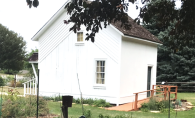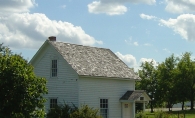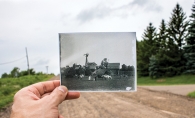In 1943, in Oshkosh, Wisconsin, 18-year-old Jack Andrashko and his buddies walked into a recruitment office and enlisted in the military, knowing full well that if they didn’t volunteer now, they’d be drafted in a few months when they graduated from high school. Now, 73 years later in Woodbury, Andrashko says he hasn’t told many stories about his time in the war. “I think for a lot of guys, and myself, there’s no glory in talking about it,” he says.
When he enlisted, Andrashko wanted to go into the Navy with his friends, but the Navy rejected him because of an overbite, and the Air Force was full. So he ended up in the Army, where he trained with the 589th Field Artillery in the 106th Division before being plucked out to be a replacement GI. It was then that he was sent to France, where he was moved multiple times before finding himself in the Battle of the Bulge—only he didn’t know that.
“What was described as the Battle of the Bulge, we didn’t know what it was. We were just there,” he recalls. And his experience was especially unique as a replacement. “As a replacement, you’re only in an outfit for so long, so you don’t even get to meet anybody,” he says. “Matter of fact, some of the experiences I had that were … the most life-threatening, I was with guys that I hadn’t known very long.”
During what he now knows was the Battle of the Bulge, his unit was moving forward, with Andrashko near the end of the line, when the Germans opened fire and everyone ran, separated. “I ended up under some pine trees with two guys. I’d never met them before and didn’t know who they were,” he says. “One guy was an MP [and a replacement GI] … and he had never fired an M-1, and that was his new rifle. … The other guy was from the Air Force and he didn’t know how to load his gun.”
After a day and a half of hiding in sub-zero temperatures, they crept out and found a chalet that happened to be an aid station. “Horrible, horrible sight,” he recalls. “American soldiers, dead soldiers, stacked up on the side of the house. You walk by and you look at them and you try not to pay attention. … I never told anybody about that because it was too horrible a sight to see.” After he dropped off the two men at the aid station, he never saw them again.
When the war was over in Europe, the war in the Pacific was still roaring on, so they waited in Austria. Andrashko was stationed near defeated Nazi leader Hermann Goering’s chalet. At the chalet, there was a lithograph of a mountain goat framed on a wall. After a hunting excursion with a civilian, where Andrashko shot a mountain goat in one try, “I thought about the picture and thought, ‘Oh, I’ll take that home!’” And the photo is in his possession to this day.
Once he made it home, Andrashko did what a lot of veterans did: tried to live a normal life. He went to business college, got a job as a bookkeeper in Wisconsin, got married, and eventually moved to Minnesota to work as a salesman for a paint company.
He doesn’t regret fighting in the war, he says, but looking back he calls it “a total and complete waste of time” because of all the young lives lost.
“I don’t know how to say it, but I have a lot of confidence in human beings,” he says. “But when you have people that want to talk about war, I don’t have a category for those people.”

For more information on the Battle of the Bulge, December 1944 through January 1945, visit the website here.









